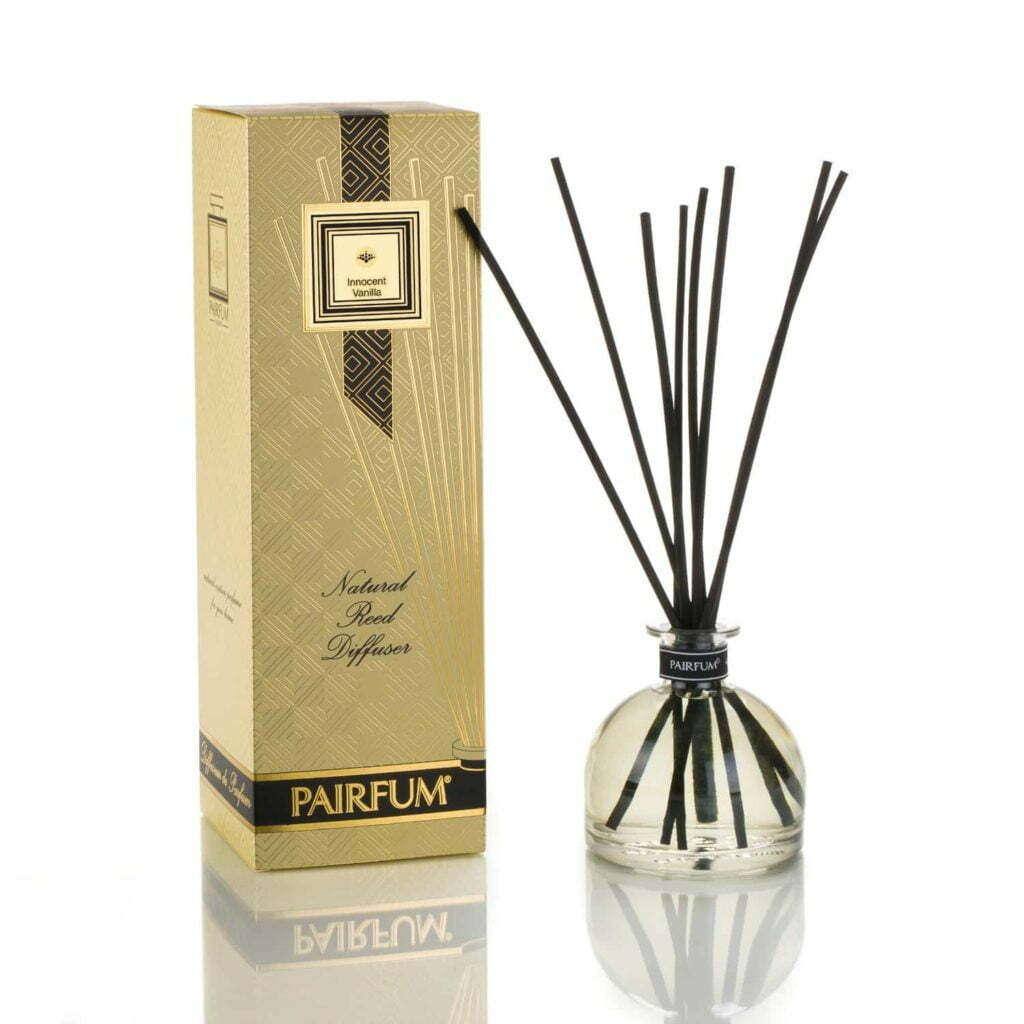Their History & Role In Perfumery

Aroma chemicals are fundamental to the art and science of perfumery. These organic compounds are the essential aroma ingredients that allow perfumers to craft complex, memorable fragrances. Whether derived from nature or produced synthetically, aroma chemicals are responsible for the scent, structure, and evolution of perfumes.
This article explores the origins, types, uses, production methods, and impact of these chemicals on the fragrance industry. It also discusses their scientific nature, applications in fine fragrance and cosmetics, and the balance between natural and synthetic materials in fragrance composition.
What Are Aroma Chemicals?
Aroma chemicals are chemical compounds that convey specific scents when perceived by the human olfactory system. These compounds include both natural aroma chemicals and synthetic aroma chemicals. They can be isolated from essential oils or produced in laboratories through chemical synthesis. As a type of organic compound, each aroma chemical possesses a unique chemical structure that determines its odour and volatility.
In perfumery, these chemicals are the foundation of fragrance creation. They are used to build accords, layer aromas and create distinct olfactory experiences across perfumes, fragrance oils, and cosmetics. These compounds range from light, volatile top notes to long-lasting base notes.
Historical Development of Aroma Chemicals
Early Milestones in Aroma Chemistry
The use of aromatic chemical substances in perfumery began in the late 19th century, when chemists started isolating aroma compounds from natural materials. One example is benzyl acetate, a natural aroma chemical that imparts a sweet, floral scent and is commonly found in jasmine.
As the demand for consistent, long-lasting perfumes grew, synthetic aroma chemicals became essential. Their development allowed for the creation of stable fragrance ingredients with predictable performance.
The Birth of Modern Fragrance Design
With advancements in chemical synthesis, perfumers gained access to an expanded palette of aroma chemicals. Aldehyde, first used in the early 20th century, introduced a new dimension of abstract, radiant aroma. This marked a significant shift in fragrance composition, enabling the invention of olfactory experiences that were not limited to natural scents.
The growth of the aroma chemicals industry throughout the 20th century saw the introduction of synthetic aroma chemicals that mimicked or extended the qualities of essential oils. These developments helped meet global demand for affordable, consistent perfumes and fragrance oils.


Categories and Functions of Aroma Chemicals
Classification by Structure and Function
Aroma chemicals can be categorised based on their molecular composition and aromatic qualities. Each type plays a unique role in fragrance composition:
- Aldehydes: Four key forms are used widely for their fresh, clean, and sometimes metallic scent. They contribute brightness and volume to floral scent profiles.
- Esters: These compounds are responsible for fruity, juicy notes and are common in both flavour and fragrance.
- Ketones: Ketones like muscone provide depth and richness, often used in base notes.
- Lactones: These offer creamy, sweet, and milky facets, ideal for gourmand blends.
- Terpenes and Terpenoids: Derived from essential oils, these are central to citrus and herbal notes. Limonene, a terpene found in citrus fruit peels, gives vibrant citrus character.
High Impact Aroma Chemicals
High impact aroma chemicals are potent, long-lasting compounds used in trace amounts to define a fragrance’s character. Their intense aroma and low detection threshold make them invaluable in fine fragrance formulation.
Application Across Fragrance Layers
Perfumers select aroma chemicals based on their evaporation rate and scent character:
- Top Notes: Typically include citrus, green, and aldehydic elements that create the first impression.
- Heart Notes: Comprise floral, spice, or herbal aroma chemicals that form the core of the scent.
- Base Notes: Use heavier oils and synthetic aroma chemicals to provide depth and longevity.
Production and Sources of Aroma Chemicals
Natural Aroma Chemicals
Natural aroma chemicals are extracted from plants, flowers, roots, and spices. Extraction methods include:
- Steam Distillation: A traditional technique that uses steam to extract essential oils without degrading them.
- Solvent Extraction: Suitable for delicate flowers, it yields absolute oils rich in complex aroma chemicals.
- Cold Pressing: Commonly used for citrus fruit peels to obtain vibrant essential oils.
Essential oil and essential oils remain a major source of aroma compounds in natural perfumery. These contain hundreds of aroma chemicals, making them complex and multifaceted.
Synthetic Aroma Chemicals
Synthetic aroma chemicals are created through chemical synthesis or biotechnological methods. These processes allow for precise control of aroma, purity, and performance.
One example is Endeavour Speciality Chemicals, a company that specialises in crafting synthetic aroma chemicals for the fragrance and flavour industries. They help provide perfumers with materials that may be rare, expensive, or unsustainable in their natural form.
Synthetic aroma chemical production also reduces pressure on natural resources, making it a responsible alternative to overharvesting.
The Role of Aroma Chemicals in Perfumery
In perfumery, the strategic use of aroma chemicals defines the final fragrance. These compounds are selected not only for their aroma but for their behaviour when blended with other ingredients.
- Fragrance creation relies on the combination of natural and synthetic aroma chemicals to create olfactory harmony.
- Fragrance composition includes balancing volatilities, aroma intensities, and interactions between compounds.
- Carrier oil is often used to dilute aroma chemicals in oil-based perfumes, allowing for smooth application and scent diffusion.
Each molecule in a fragrance must interact with the others to form a stable and pleasing blend. The complexity of this interaction is what makes perfumery both a science and an art.


Scientific and Sensory Considerations
Each aroma chemical has a distinct chemical structure which influences its volatility, diffusion, and stability. Understanding the molecular behaviour of these compounds helps perfumers design compositions that evolve beautifully over time.
Perfumers must also consider:
- The odour profile of each molecule
- The way aroma chemicals combine with other compounds
- How aroma is perceived by consumers
These factors ensure that fragrances perform consistently and retain their character across different products, including cosmetics and fragrance oils.
Aroma Chemicals in Related Fields
Aroma chemicals are not limited to perfumery. They are essential in:
- Flavour and fragrance design for foods and beverages
- Flavour enhancers in natural and synthetic forms
- Creating fragrance ingredients for detergents, air fresheners, and skincare
Due to the overlap in olfactory and gustatory perception, many aroma chemicals serve both flavour and fragrance applications. The difference lies in the intended use and required purity.
Environmental and Regulatory Context
The aroma chemicals industry is increasingly focused on sustainable and ethical practices. This includes sourcing raw materials responsibly, reducing waste in production, and designing biodegradable compounds.
Aroma chemicals are regulated by organisations that govern their use in both perfumery and cosmetics. Standards ensure that these ingredients are safe for human use and environmentally sound.
Fragrance houses and manufacturers must comply with these guidelines, balancing creative freedom with regulatory responsibility.
Timeless Fragrance for Your Living Space
For those who appreciate the lasting warmth of amber and the creamy depth of sandalwood, a reed diffuser is a refined way to enjoy these fragrances throughout the day. The gentle diffusion of scent transforms any room into a calm and welcoming space. Ideal for living areas, bedrooms or quiet reading corners, it brings the sophistication of fine perfumery into your daily surroundings with subtle elegance.
Large Bell Reed Diffuser by Pairfum London
Crafted with attention to both form and function, this large bell reed diffuser features natural reeds that slowly release fragrance oil into the air. It combines a sleek, glass design with generous capacity to ensure a long-lasting scent experience. Easy to use and visually striking, it is perfect for those seeking a signature scent that lingers gently without overpowering the room.


Conclusion
Aroma chemicals are the lifeblood of perfumery, enabling the creation of diverse, beautiful, and enduring fragrances. From essential oils to synthetic aroma chemicals, every aromatic compound plays a role in fragrance creation.
Their versatility and scientific precision make them indispensable in modern perfumery and across related industries such as cosmetics and flavour. Whether derived from nature or born in a lab, these molecules continue to expand the creative possibilities for perfumers around the world.
Through constant innovation, the fragrance industry continues to explore new ways to use aroma to delight the senses, tell stories, and create emotional connections.
